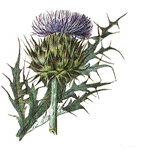Papers in the Biological Sciences

Svata M. Louda Publications
Document Type
Article
Date of this Version
1992
Abstract
We tested the hypothesis that environmental stresses decrease overall plant resistance to insect herbivory in the field and evaluated biochemical mechanisms proposed to explain insect response to stressed plants. To impose a stress treatment, we severed lateral roots and rhizomes of a native crucifer (bittercress, Cardamine cordifolia) and quantified plant and herbivore responses for treatment and control clones. Severing roots and rhizomes once, early in the growing season: (1) produced moderate, but detectable, changes in plant physiological traits, specifically greater transient leaf water deficits at midday (P < .05) and elevated nitrate-nitrogen concentrations (P < .05); (2) altered plant quality, by causing an increase in soluble carbohydrates (P < .003), isoleucine concentrations in leaves (P < .01), and possibly glucosinolate concentration (P < .10), but made no differences in most primary nutrient concentrations, including total nitrogen, total free amino nitrogen, total amino acids, proline, and leaf water content; and (3) led to increased herbivore by chewing and leaf-mining (P < .001), but not by sap-feeding, insect herbivores. Trends toward decreased plant stature and fruit reproduction were not significant after 1 mo. In addition to the significant effect of our treatment, we found extensive variation in the magnitude of response to stress and herbivory among replicates. We hypothesize that environmentally induced physiological variation among plants within a plant population commonly distributes insect herbivore disproportionately onto a subset of the individuals, and in so doing influences the demography, distribution, and evolution of that plant population.


Comments
Published in Ecology 73:1 (1992), pp. 153-169. Copyright 1992 by the Ecological Society of America. Used by permission.